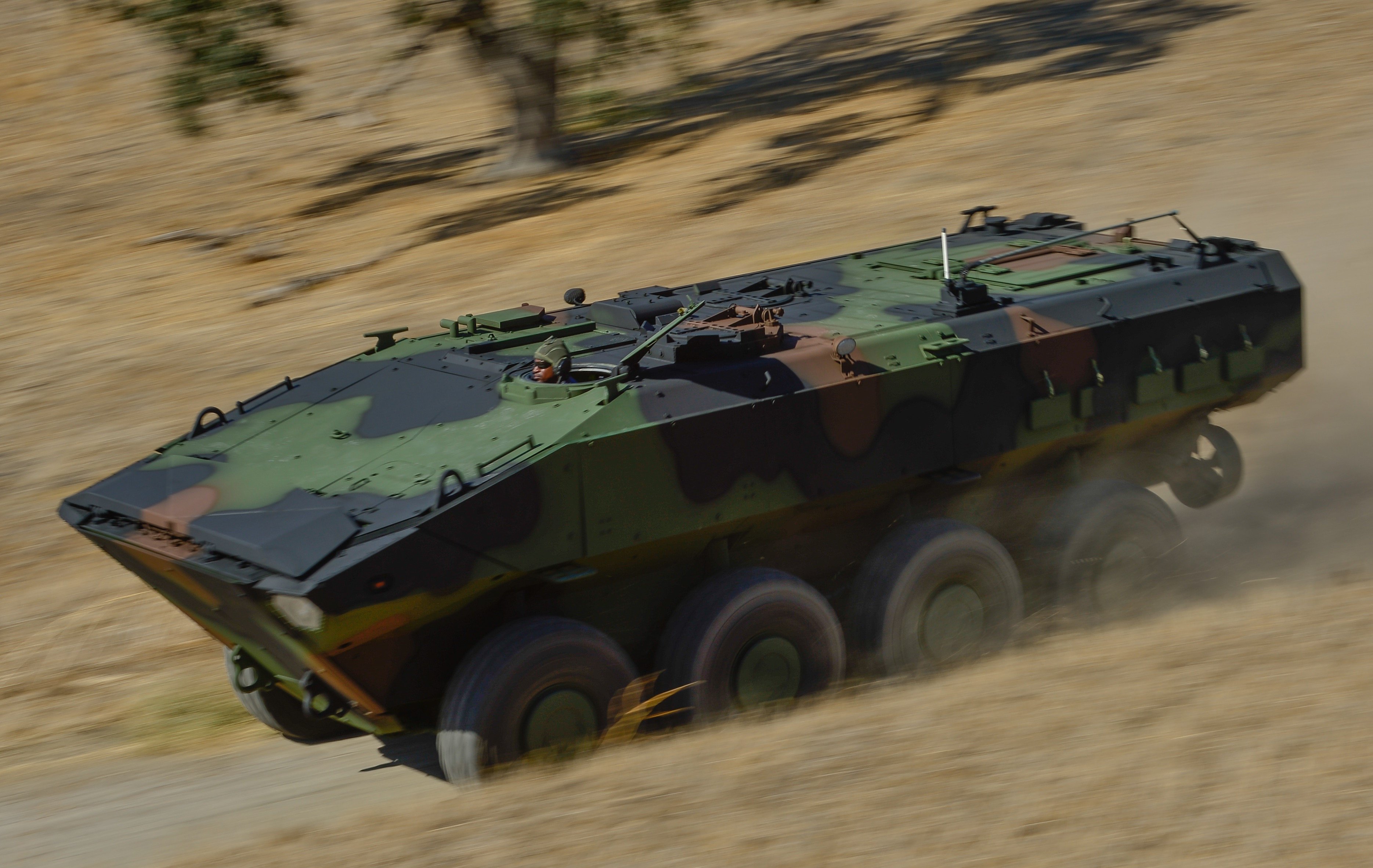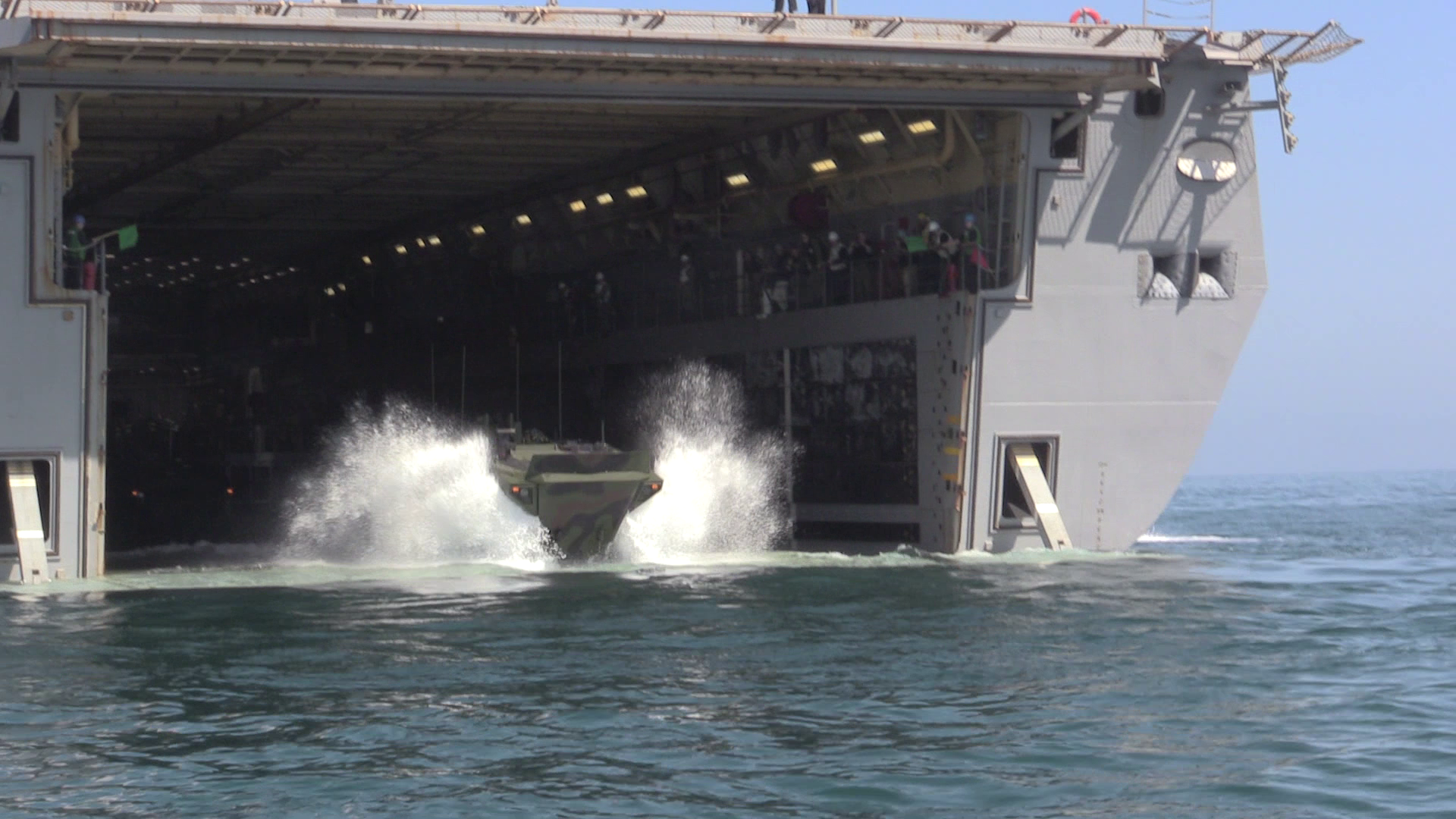
After years of stops and starts, the Marine Corps has selected BAE Systems to build the service’s next generation of armored amphibious vehicles designed to protect Marines in transit from sea to shore, the service announced late Tuesday afternoon.
BAE will now produce 30 low-rate initial production units of its eight-wheeled Amphibious Combat Vehicle. The company beat out SAIC to win a $198-million contract for the ACV 1.1 program, with the first vehicles delivering in the fall of next year, John Garner, the Program Executive Officer for Land Systems in the Marine Corps, told reporters during a late Tuesday conference call.
“The path has been navigated to date with one primary goal in mind: ensuring that we field the best capability to our Marines as quickly as possible at an affordable price,” Garner said.
The total value of the contract, if all options are executed, could be as high as $1.2 billion for up to 204 ACVs, BAE said in a late Tuesday statement.
Four of the LRIP vehicles are set for destructive testing, and the balance will move out to operational Marines as quickly as possible to start a long-stalled effort to replace the 870 1970s-era Amphibious Assault Vehicles the service has struggled to maintain in the inventory. PEO Land Systems anticipates an initial operating capability in the second quarter of Fiscal Year 2020, with a full-rate production decision later that year.
The Marines have already identified the 3rd Assault Amphibian Battalion within I Marine Expeditionary Force, based in Camp Pendleton, Calif., as the first unit to swap their AAVs for the new ACVs. Fielding should begin in the fourth quarter of 2020, with full operational capability scheduled for 2023, according to a Marine Corps news release.

The contest for ACV was born after the Marines canceled the Expeditionary Fighting Vehicle program in 2011, after investing more than $3 billion in development for an armored amphibious carrier that could travel up to 20 knots from an amphibious warship to the beach. After than high-speed swim capability proved too costly and too challenging, the Marines instead elected to develop an incremental approach to replacing the AAVs by fielding this ACV 1.1 variant now and considering high-speed swim and other capabilities as potential future upgrades. The Marine Corps also prioritized having a constant conversation internally and with industry on what the service needed for the replacement based on available designs.
“A number of years ago, it was apparent that no individual’s competitor in production at the time satisfied the full Marine Corps amphibious vehicle requirements. So the program office built our own government tech demonstrator that did just that. We made the lessons learned available to industry, and I believe they made the most of that as they refined their offerings,” Garner said.
In 2015 the service down-selected from five companies to two – BAE and SAIC. Each built 16 prototypes that were tested extensively before the final award on Tuesday.
Garner said the decision between BAE and SAIC was based on best value.
“We evaluated technical and we evaluated cost,” Garner said.
“Technical was more important than cost, but of course the cost had to be within certain acceptable parameters. We did what was called the best value determination between the technical performance based on the two different competitors within all the developmental testing and … the total price.”
Beyond ACV 1.1, the Marines are set to develop the next iteration of the program – ACV 1.2.
Kurt Koch, from the service’s Capabilities Development Directorate, said the BAE ACV had already met the 1.2 objectives.
“We estimate the 1.1 to 1.2 will be a fairly smooth transition,” he said. “The systems will look similar, with the key difference being that 1.2 will take on a number of additive capabilities and introduce mission role variance.”
While the production version of 1.1 will need some minor modifications from the 16 prototype test vehicles, service officials said they wouldn’t be much.
“Quite frankly, we could field the vehicle right now the way it is,” Garner said.





